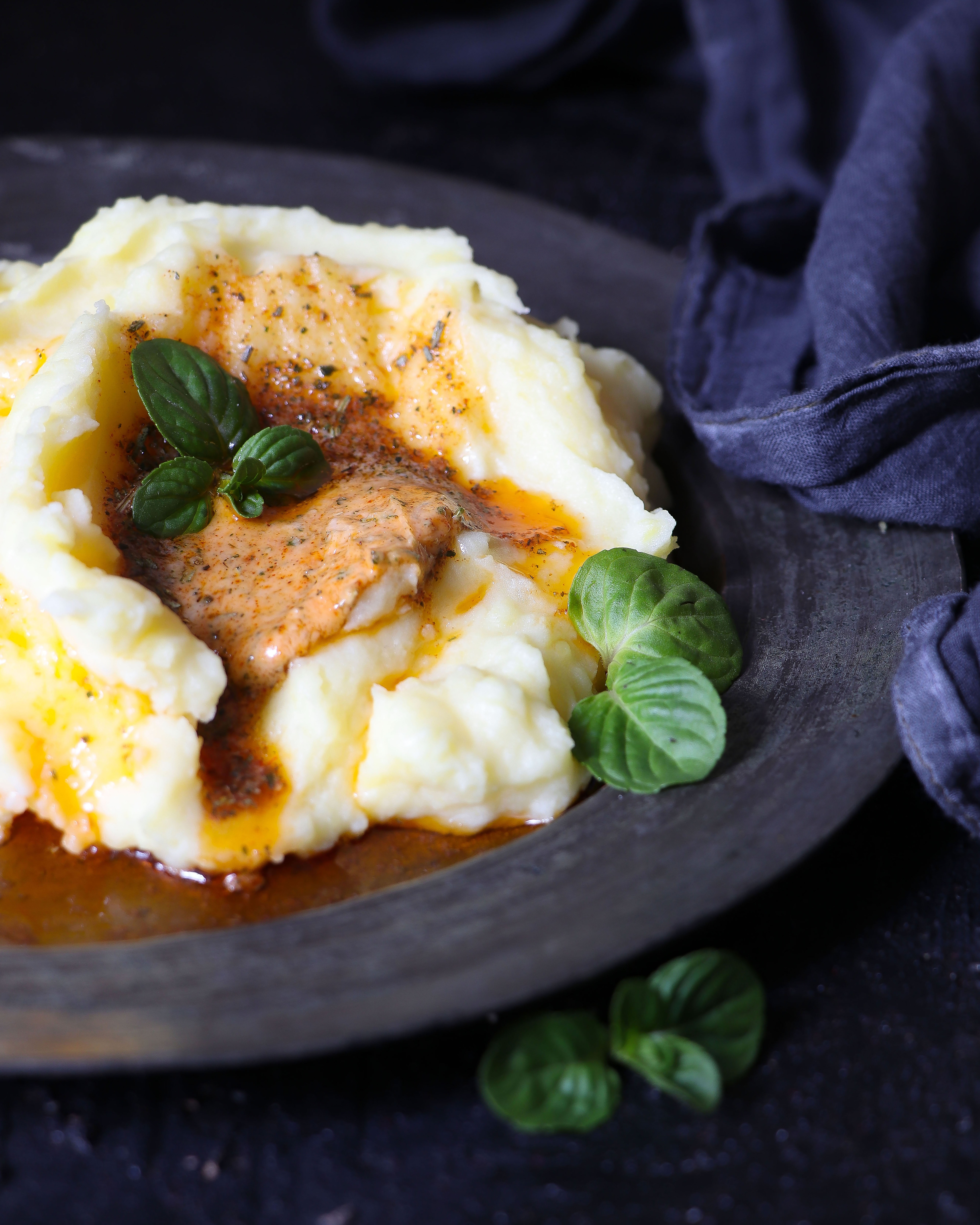How to Thicken Mashed Potatoes. Think you ruined a batch of mashed potatoes? Don’t worry, there’s an easy way to fix it and make your mashed potatoes thick again.
However, before we get there, allow me share some tips on how to make thick and creamy mashed potatoes in the first place.
There are two types of potatoes, the waxy and the starchy potatoes. Waxy potatoes have low starch content and are characterized by a firm, creamy, and moist flesh that holds its own shape very well after cooking.
They are a great choice for casseroles, boiling, potato salads and roasting. Some examples are new potatoes and the red bliss potatoes. On the other hand, starchy potatoes are high in starch and have a low amount of moisture.
Starchy potatoes are very good for frying, boiling, and baking because they’re fluffy. However, unlike the waxy ones, they don’t hold their own shape together so well after cooking and tend to scatter. Do not use them to make potato salad, casseroles, etc. Some examples of them are the russet or the classic Idaho.
Okay, there’s one more: the all purpose. All purpose potatoes are at an intermediate level. They have a well balanced amount of starch that’s right at the sweet spot between starchy and waxy. Since they’re multipurpose, they can be used for just about any cooking practice. An example is the Yukon gold.
Table of Contents
Which is the best for mashed potatoes?

The best choice for mashed potatoes is an all purpose type like Yukon gold. Yukon gold is in the sweet spot so it’s a good choice. Also, Yukon gold is hard to overmash and has a very creamy texture.
See also: can I eat chicken soup that has been left out overnight
The next step is to peel the skin before you boil. Some people leave the skin on but if you want a full creamy and consistent texture, I’ll advise you peel off the skin. Fun fact, if you want to prevent your potatoes from changing color while you’re peeling, leave it in a bowl of cold water while you work.
Cut them into one inch cubes after you’ve peeled them so they’ll cook easily.
Pour the potatoes into a pot of cold water and then add a generous pinch of salt. This will build some kind of layer of flavor as you cook so you’ll need less salt along the way.
Crank up the heat and bring the potatoes to a soft boil. Once they’re soft boiled, reduce the heat to low and then allow it simmer for 10mins.
Remove the pot from the fire and drain the water. Put the drained potatoes back in the pot over medium heat and keep stirring for up to 3 minutes to get rid of residual moisture.
Mash the potatoes with a potato masher or ricer, don’t use a hand mixer or food processor because it will end up creating some kind of gluey-like paste.
Add unsalted butter because it’ll allow you total control over the amount of salt in your mashed potatoes, and plus, let’s not forget you’ve already added salt before.
I’ll advise you to use heavy cream and melted butter. From my experience, those were the best choice. Add the melted butter first to ensure the texture is firm before adding the cream. Season with a little salt.
Before you add the heavy cream, pour it into a sauce pan over medium–high heat and bring to a simmer and after a few minutes, gradually add it to the mashed potatoes until they’re fully incorporated. If you add the cream all at once in a rush, the whole thing will become soupy. Keep stirring and watch the whole thing thicken with some mad consistency. Look at that beauty.
What if I’ve already made a whoopsie?
If you ended up with a soupy mess, here’s something to try.
Place the potatoes inside an oven and allow for 10 to 15 minutes at a temperature of 325F. The alternative is to pour into a saucepan and continue stirring until dry but you could risk burning it.
You could cook some more potatoes and mash them without adding the liquid. Incorporate them into the ones you’re trying to fix.
Add thickening agents like corn starch into the potatoes. Use only a teaspoon until it’s thick enough to your liking. Ensure the potatoes are warm when you’re adding them.
You can also use potato starch but not flour because you’ll have to cook it for a while before the raw taste is gone.
Few mistakes people make when making mashed potatoes
You’re adding the diced potatoes into the boiling water
If you first of all boil the water and then add the diced potatoes, the sudden submerging of boiling water will make the outsides cooked and the insides not so much.
Add the diced potatoes into a pot and fill with water until it’s just over the potatoes. Bring the whole thing to a boil and reduce heat to a simmer because if you leave it to boil for long, it could fall apart regardless of the type.
You’re mashing with the wrong equipment
Don’t use stuff like food processors or most other devices you plug in. The speed and mixing power will make the potatoes release more starch until it becomes gluey.
You try to cook it before hand
Potatoes aren’t supposed to sit out for too long because they’ll turn sticky. If you’re pressed for time, wash and dice the potatoes all in advance and keep them covered in water until you’re ready to cook them.